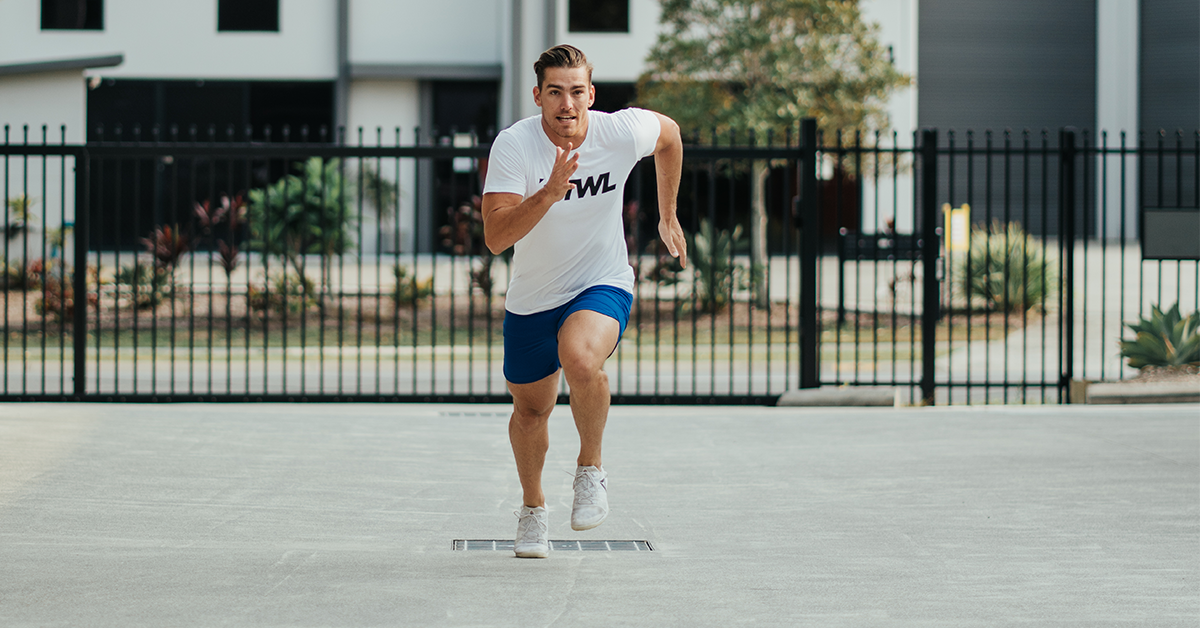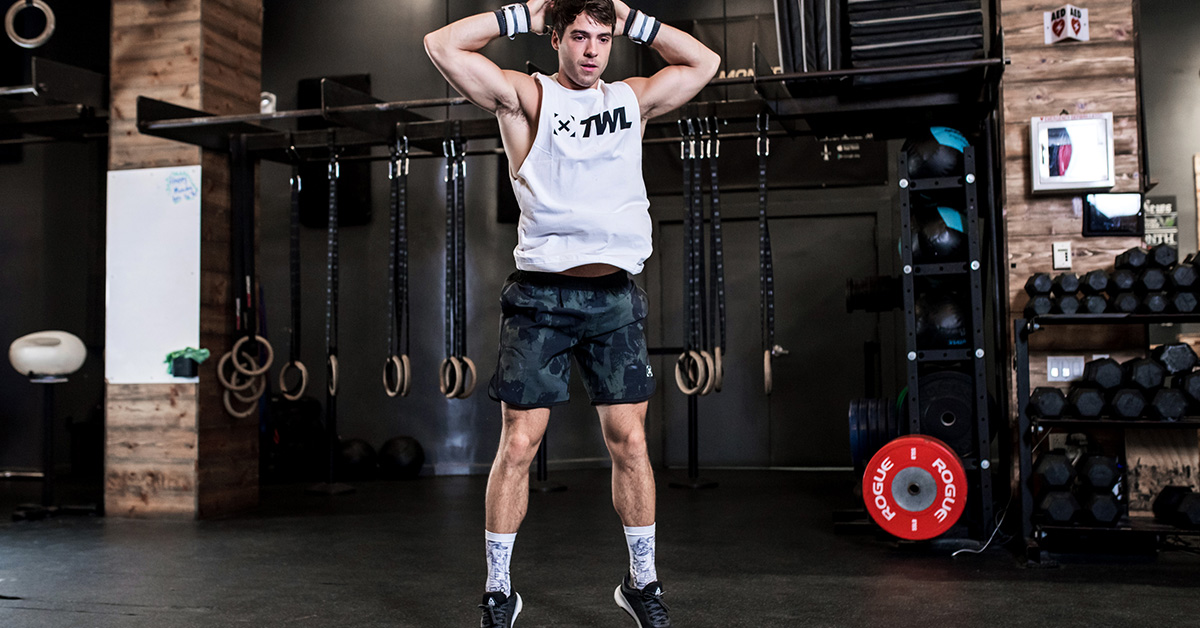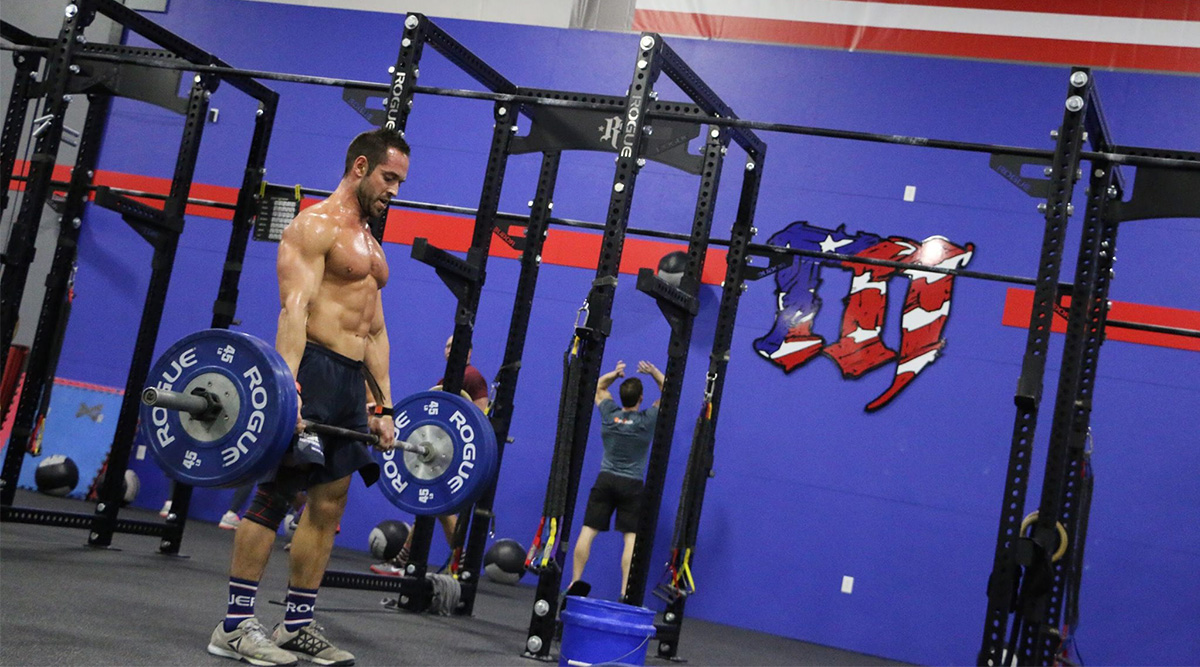Sprinting faster is not just about working hard but also working smart. You can only get so far with running mindlessly at top speed. Fortunately, achieving your optimal sprinting capability isn’t rocket science. It boils down to having a solid foundation built on perfected fundamentals and the correct form. Learn how to sprint faster with these tried-and-tested tips.
8 Tips for Learning How to Sprint Faster
1. Increase Your Holistic Physical Strength
Sprinting is far more than just about upping your leg game. To increase your speed, you don’t only need to work out your legs, but also your core, back, shoulders, and neck. These areas help you hold the correct form while running at high speeds.
Shop Now
Top athletes at max speed can hit the ground running with a force that’s approximately three times as much as they weigh, so their training regimens cover core work, squats, and weights to condition the whole body for that kind of pressure.
Strengthen your core with exercises like side planks and mountain climbers. Gain explosive strength in your legs with various plyometric exercises two times a week, such as box jumps, jumping lunges, and toe taps. You can also do compound exercises like straight-leg deadlifts and power cleans three times a week on alternating days. It’s best to do these when your legs are well rested, and then slowly build up the reps and load.
View this post on Instagram
2. Correct Your Form
Whether you’re just starting to learn how to sprint or trying to unlearn some bad running habits, it might be difficult to maintain the right posture. Or you may start out doing it right, but slowly slack off when you get tired. But upholding the correct form for sprinting will do wonders for your speed and endurance down the line.
Torso
How you sprint can’t just be a sped-up version of how you run, because the body must be positioned optimally to push itself forward as fast as possible in a short burst of time. Keep your torso upright and controlled with a slight forward lean. It might be tempting to lean as far forward as you can but doing so would minimize your range of motion and may put too much strain on your hamstrings.
Arms
Michael Johnson, a four-time Olympic sprint champion, said that arms are like accelerators that drive your legs. Build momentum by holding your arms in an L shape, ideally at 65-95 degrees, throughout your sprint. Don’t swing your arms across your body. Rather, drive them purposefully as far back as you can, and then swing them forward to your chin level. Make sure to keep your hands and fingers relaxed, as a clenched fist may restrict your arm movement.
3. Land on the Balls of Your Feet
The position of your feet when sprinting should be different from walking or running. You may be used to landing on your heels, as you do when you walk or jog. However, this takes much too long for a sprinter.
Take notes from Usain Bolt, widely renowned as the greatest sprinter in history. It’s more efficient for you to land on the balls of your feet and push off from your toes. This allows you to propel forward faster because a smaller area of your feet must touch the ground.
4. Take Shorter Strides
A 2013 study published in the Journal of Strength and Conditioning Research cites that taking shorter strides, which results in a higher step count, can help you sprint faster. The study showed that even just an additional quarter of a step in a 2.5-meter sprint can make a difference.
When sprinting, focus on the tempo of your steps instead of the distance you’re covering.
5. Pace Your Breathing Correctly
Your body needs oxygen to generate sufficient energy to keep working hard. When you sprint, you need to increase your air intake, keeping it in sync with the cadence of your strides to minimize energy wastage from muscle tension.
Just as you condition your body for the force you inflict on it when you sprint, you need to condition your lungs for oxygen overload. Practice breathing exercises daily by doing multiple sets of frantic breathing. Go for 30 seconds to start with, and then gradually work your way up to 60 seconds per set.
Breathe in through your nose and exhale out of your mouth. Keep your breathing rhythmic as if it were timed with your strides, and refrain from holding your breath.
View this post on Instagram
6. Gradually Increase Speed
As the popular saying goes, practice makes perfect. When training, don’t try to do too much too fast or you might risk getting injured. Set realistic goals and allow yourself to slowly work up to faster speeds or longer distances. Start at 20 meters, and gradually increase by another 20 meters until you hit 100 or 200 meters.
The longer the distance you travel, the better your endurance becomes. Make sure to time yourself so you can aim to run faster the next time you run that set.
If you’re doing high-intensity sprint training, consider doing rolling starts, as well. Begin the exercise by walking, then speed up every 10 seconds. You’ll go from walking to jogging to running to sprinting. This will help your body adapt and prepare it for the workout.
Another good tip is to run with a partner that is better than you. As with any sport, practicing with someone who is on a higher level gives you a tangible example to aim for and can motivate you to perform better.
7. Make the First Steps Count
Starting strong helps you build momentum faster, empowering you to accelerate in a shorter time. To explode from the get-go, try to angle your leg at 45 degrees on the starting block. When you push off on your sprint, make sure to run on the balls of your feet to propel you forward swiftly and drive your arms for momentum.
8. Relax Before a Run
It might sound counterintuitive but trust Usain Bolt. He recommends staying relaxed as it keeps the muscles loose, making for a smoother and quicker run. Staying calm and at ease during the actual run is also important so that you get the wide range of muscle movement that you need to push yourself forward as fast as possible.
Like anything, improving your sprinting takes time, patience, and effort. Ready to hit the pavement? Get to work!

















